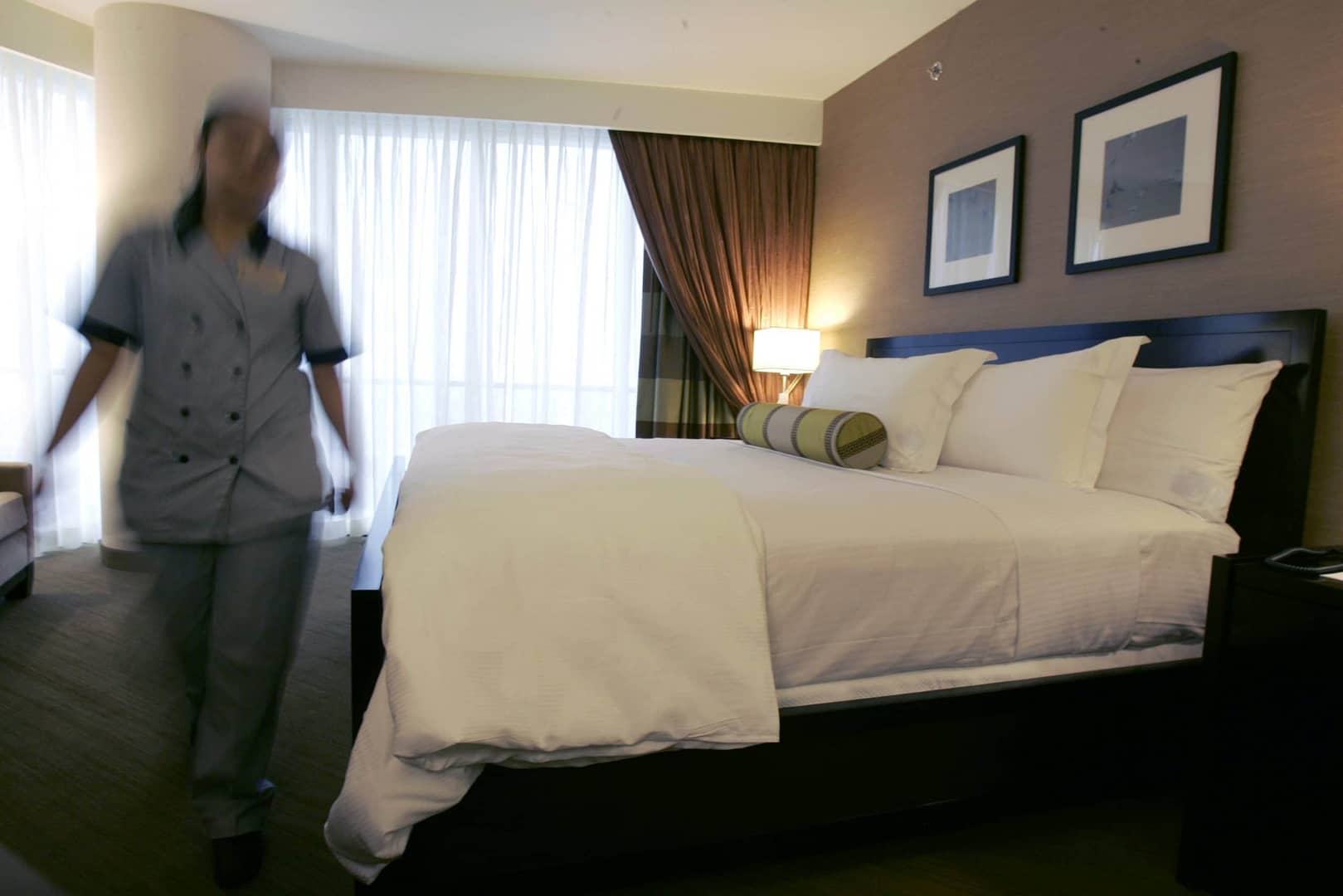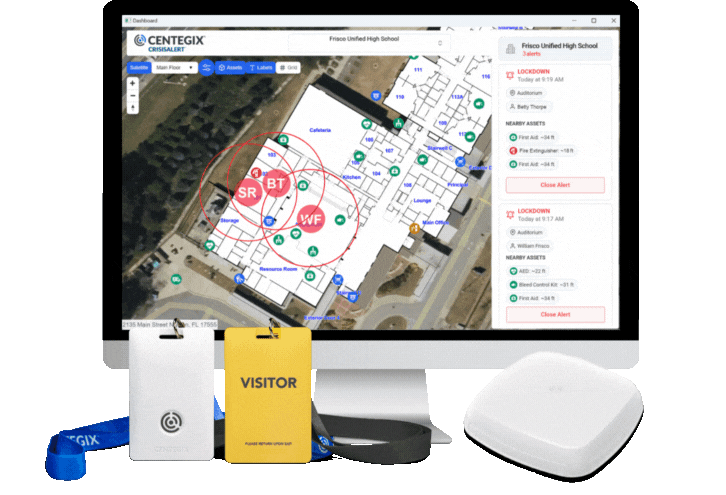Article originally featured on HotelBusiness.com
The safety and security of hotel workers have been put in the national spotlight recently with the publication of alarming studies highlighting the disproportionate amount of on-the-job incidents of sexual harassment and assault faced by hospitality workers. According to one study, 89% of workers in the hospitality industry experienced one or more incidents of sexual harassment in their working life. A similar study in Chicago found “58% of hotel workers and 77% of casino workers surveyed had been sexually harassed by a guest.”
In response, governments and hotel chains are requiring safety solutions for hospitality workers. Currently, local ordinances in states such as Washington, New Jersey, Illinois, and parts of California mandate hotels to provide wearable/portable panic buttons to their employees at no cost. Miami Beach requires hotels to arm staff with a panic device as well. But, do these well-intentioned laws truly protect hotel staff, or are they placebos that just “check the box?”
Some solutions fail to protect staff during an emergency, and it is the expectation, and now the responsibility, of hotel management to install a solution with the purpose of protecting staff members employed at their properties. The most effective emergency response solutions are simple to use; provide fast and accurate information; and communicate critical information to both internal and external responders. Hoteliers should consider the following guidelines when choosing an emergency response system to protect staff.
Solutions Must Be Discreet and Accessible
All staff deserve to feel safe at work. No matter where an incident takes place, housekeepers and other staff need the means to act effectively, quickly, and discreetly—without compromising either safety or guest experience.
Some ordinances such as the one passed in Chicago plainly state panic buttons must be worn on the body and be “quickly and easily activated.” However, other ordinances—such as the one in Miami—state hoteliers must provide a “safety button or notification device” without more detail.
An alert system should require very few steps for any staff member to request help because, in a frightening situation, gross motor skills are challenged. One-touch activation by clicking a single button on a body-worn device is the simplest and fastest way to call for assistance.
Identifying Exact Location and Person is Critical
When installing a system to protect staff, room-level accuracy is not optional; it is a necessity. Housekeepers entering hotel rooms can be easily trapped behind a locked door. Responders risk losing valuable time and disrupting innocent guests by knocking at the wrong room, creating a bad or dangerous guest experience. Management must be equipped to direct help where it is needed—easily and immediately.
Many hotels are currently implementing Global Positioning System (GPS) solutions to track emergencies, but while GPS solutions can relay somewhat accurate information for outdoor scenarios, they are unreliable as an indoor solution where obstructions (i.e. walls) block and distort signals. Furthermore, GPS systems are unable to identify the exact floor of an incident in a multilevel building.
Indoor Positioning Solutions that can relay the exact floor and room where an incident has occurred are imperative for responders to be able to react quickly and effectively.
Technology can automate the rapid sharing of information critical to responders and everyone affected. Additionally, the network must be able to accurately identify the person calling for help. For a housekeeper in duress, relaying even simple information such as name and location verbally can be difficult. Alert devices should be assigned to specific users, identifying them automatically when they request help.
Staff Need to Be Safe Everywhere
Current “panic button” ordinances don’t require 100% coverage, which means panic button systems are not required to work in all areas of the hotel. This lack of requirement opens a loophole for hotels to utilize unreliable cellular and WiFi networks that leave staff vulnerable in areas such as stairwells, elevators and basements, where those networks don’t function. Additionally, a simple power outage could cause WiFi and cellular networks to fail. This creates a liability for all hotel operators.
In order to best protect staff, a solution must secure every square foot of the property without any dead zones. Panic buttons must function everywhere. Safety solutions that function independently of existing wireless infrastructure ensure maximum reliability and coverage.
911 Integration Key
Protecting hotel staff is not simply equipping them to call for help when encountering a disorderly guest. All staff should be empowered to pursue appropriate responders during medical, criminal or fire emergencies. Any system should be linked to quickly provide key information to local police, paramedics, EMTs and other certified first responders.
Instant Access to Actionable Information
It is imperative for hotel management to be on top of all emergency situations in real time. Emergency response solutions should alert appropriate management even when they’re away from the hotel. Many solutions include a mobile application where management can receive alerts in real time on their phones, allowing them to initiate communications and proper responses to incidents remotely. A network that can communicate actionable information in real time to all parties regardless of their location increases the safety and security of operations.
An optimal safety solution for hotels will not only include mobile panic buttons but will incorporate both a hardware and software component in order to achieve needed coverage and vastly improve the day-to-day security of the property. Emergency alert systems can get crucial help to the scene quickly, no matter the nature of the safety event. Ask the right questions to ensure the solution you choose is fast, reliable and available anytime, anywhere in the building. Ensure emergency responders get informed quickly and accurately. Ensuring prompt, appropriate responses will save lives.
KEEP READING
Federal Funding Enhances School Safety Now and into the Future
The federal government is hard at work ensuring Americans receive financial assistance for hardships endured during the pandemic. One key goal of The Coronavirus Aid…
Read more >
7 Ways to Maintain a Safe School Community
“We have to do everything we can to have safe schools and protect our students,” is a phrase Mike Johnson, Managing Director at ClearpathEPM, not only repeats but constantly works toward each day. After nearly 30 years as a federal law enforcement agent, Johnson now…
Read more >
Making Sure Alyssa’s Law Protects Our Children in Schools
When there is a threatening incident in a school, time saves lives. Florida has recently taken an important step to accelerate responses and protect children and educators with Alyssa’s Law, named in memory of Alyssa Alhadeff, a young victim of the Marjory Stoneman…
Read more >









